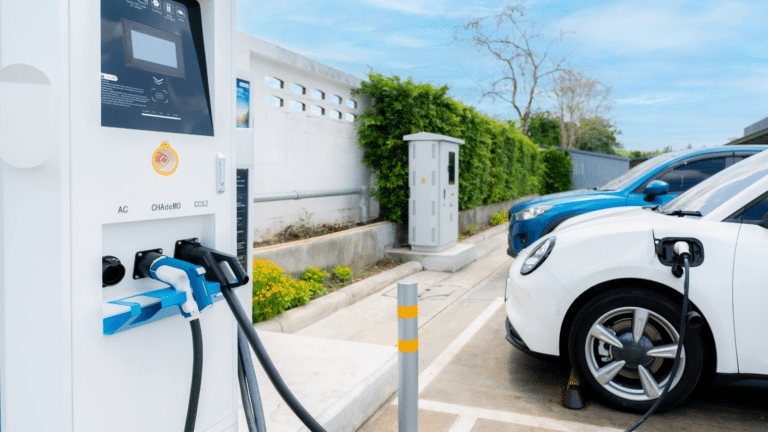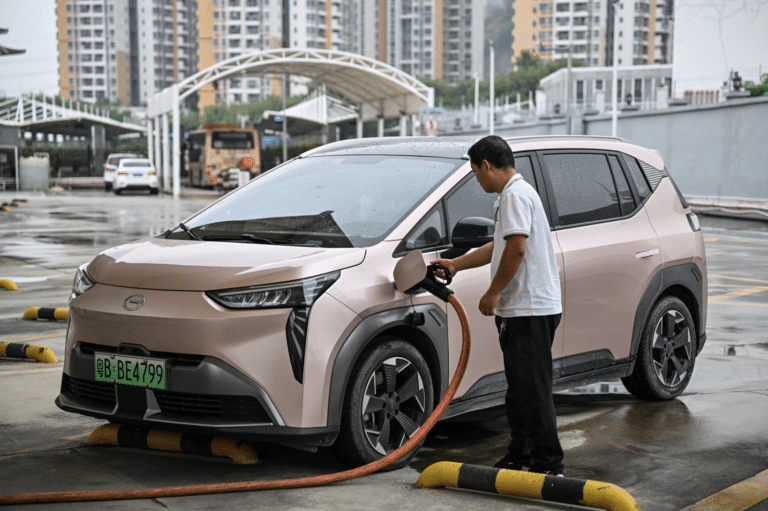This commentary represents the research and views of the author. It does not necessarily represent the views of the Center on Global Energy Policy. The piece may be subject to further revision. Contributions to SIPA for the benefit of CGEP are general use gifts, which gives the Center discretion in how it allocates these funds. More information is available at https://energypolicy.columbia.edu/about/partners. Rare cases of sponsored projects are clearly indicated.
A new pressure point has been added to Europe’s existing climate mitigation imperative to decarbonize: an energy security driver to ensure that those cuts start with fossil fuel imports from Russia. For a time, natural gas, including in transport, was thought to be a bridge fuel on the road to greater dependence on biofuels to address climate change (IPCC 2021) and meet the ambition of the Paris Agreement (UNFCCC 2015). But the need for swift action on energy diversification following the Russian invasion of Ukraine (Birol 2022) has further spotlighted the need to limit global reliance on natural gas even in the near term.[1]
Economic sanctions adopted to counter Russia’s war and constraints in Russian gas supplies to Europe are leading to price increases in energy, commodities, and services (World Bank 2022). These developments bear the risk of leading to major economic consequences, already pointing toward a reduction in global and European economic growth and potentially resulting in stagflation. The continued European and global dependency on Russia’s oil and gas exports is also leading to increased wealth transfers toward Russia as a result of the overcompensation of reduced volumes with increased prices (Zachmann et al. 2002; Wolff 2022).
The transport sector accounts for 60 percent of global oil demand and it is largely dependent (more than 90 percent) on fossil oil for its energy needs (IEA 2021a, 2022b). The increased use of fuel alternatives to oil products in transport is therefore among the priority options being considered to reduce global oil demand and respond to the challenges posed by the Russian crisis (Goulding Carroll 2022).
But how quickly could such a ramp-up in biofuels happen? Delays will be inevitable with any fuel option that requires the deployment of new distribution infrastructure and the replacement of vehicle power trains because of the construction and stock turnover times involved.
This commentary addresses the key question of whether sustainable drop-in biofuel production has meaningful potential to support a rapid phaseout of fossil energy sources. A recent analysis by the author and peers, developed for the European Parliament, addressed this question with a focus on Europe (Cazzola et al. 2022). This analysis highlights key considerations developed in it, expanding its scope to draw lessons that are applicable at a global scale. A key indication emerging from this analysis is that there is limited scope to rely on a quick ramp-up of biofuel production to handle the energy-related challenges posed by the Russian war in Ukraine while at the same time meeting environmental sustainability goals and avoiding exacerbated pressures on food prices.
Current Biofuel Demand and Policies Driving It
Global biofuel demand almost recovered to pre-Covid-19 levels in 2021 (IEA 2022d), reaching roughly 180 billion liters (OECD and FAO 2021). Nearly all the demand is currently in road transport and consists of ethanol, biodiesel (consisting of fatty acid methyl esters [FAME]), and renewable diesel (consisting of hydrotreated vegetable oils [HVO] and hydroprocessed esters and fatty acids [HEFA]).
To date, increased production of ethanol, biodiesel, and renewable diesel has been primarily driven by policy action, consisting mainly of mandates and rebates. The earliest program, Proalcohol, was undertaken in the 1970s in Brazil and succeeded in demonstrating the technical feasibility of large-scale production of ethanol as a transport fuel in high-level blends and in dedicated ethanol vehicles (IEA 2004). A second wave of policy actions was accelerated between about 2003 and 2007. These included the European Directive on the promotion of biofuels or other renewable fuels for transport (European Commission 2003) and the renewable fuel standard (RFS) in the United States, first enacted in 2005 (DOE, n.d.). A third wave of policies followed and continues to this day. It includes the expansion of the RFS, which took place in 2007; the European Renewable Energy Directive in 2009 (European Commission 2009) and its recasting in 2018 (European Commission 2018); California’s Low Carbon Fuel Standard (CARB n.d.), combining regulatory requirements and market-based mechanisms, first approved in 2009 and followed by a number of other states; a similar policy framework in British Columbia implemented in 2013 (British Columbia, n.d.); and Brazil’s RenovaBio in 2017, also using the same approach (Ministerio de Minas e Energia, n.d.).
Policies developed before 2007 were mainly focused on increasing biofuel supply and demand. Subsequent measures, especially in Europe and the United States, paid growing attention to the impacts of biofuels on food and feed prices and the environment, including direct and indirect land use changes and biodiversity loss. The results of these actions led to a significant slowdown in the growth rate of biofuel production from 2010, when the total of all biofuels produced globally reached 120 billion liters. The slowdown was particularly evident for ethanol in the United States and biodiesel in Europe—the largest contributors to biofuel supply globally until then—in addition to sugarcane ethanol in Brazil. Production kept increasing, however, in other global regions (OECD and FAO 2021).[2]
Currently, the main feedstocks used for ethanol production still consist of food and feed crops, including cereals (most of the production in the United States and Europe) and sugarcane (the vast majority of the production in Brazil). Most biodiesel and renewable diesel are derived from virgin vegetable oils (rapeseed, palm oil, soy), supplementing production from waste oils, largely consisting of used cooking oil and other waste oils and fats (T&E 2021; USDA 2021; IEA 2022d; Malins and Sandford 2022; Neste 2022).
Plans and Expectations for Future Biofuel Production
Plans for additional production of biofuels are mainly focused on renewable diesel (HVO/HEFA), with increased investments taking place mainly in North America, Europe, and Asia (T&E 2021; IEA 2022d; Malins and Sandford 2022).
The focus on HVO/HEFA is likely the result of a number of factors:
- Increased policy ambition for energy diversification and the decarbonization of sectors for which there is less scope for electrification (including aviation and maritime).
- Alignment between the HVO/HEFA fuel properties and the growing relevance of drop-in fuels (especially in aviation).
- Adequate sustainability of waste oil feedstocks compatible with the HVO/HEFA processes.
- Cost competitiveness of these pathways with respect to other pathways, enabling drop-in blending with fuels in the diesel/middle distillate pool.
- Higher technological maturity and the possibility of integrating production facilities into refineries and chemical plants.
Challenges to Sustainability
Despite increases in processing capacity for HVO/HEFA in new plants being built, it is unclear the extent to which sustainable feedstocks will be available to process, especially in the context of accelerated development of processing facilities (Cazzola et al. 2022; Malins and Sandford 2022).
Waste oils (in particular used cooking oil) are the most prevalent near-term option, as pointed out by the IEA in its 10-point plan to cut oil use (IEA 2022a). However, such oils have limited availability[3] and carry the risk of inducing indirect demand for virgin oils, with increased pressure to use land for their production. This limits their ability to align with sustainability requirements because of the impacts on emissions and biodiversity from land use change, and it increases the pressure on food and feed prices (Malins 2017; Cazzola et al. 2022).
Effects on land use change and biodiversity loss have been flagged for a wide range of biofuels. These include the oil-based feedstocks needed for HVO/HEFA and FAME pathways: palm, soybean, and rapeseed, grown in various geographies. They also include the cereal crops grown for biofuel production in the United States and Europe (Lark et al. 2022; Searchinger et al. 2022). The worst effects on key measures of local biodiversity, such as species richness and total abundance, have been identified in Asia and Central and South America, but impacts are also significant in Europe, Oceania, and North America, especially for crop-based conventional biofuel production pathways (Tudge et al. 2021).
Historical developments indicate that price impacts and other effects of biofuel production are difficult to manage, on both a local and global scale, as they induce a complex set of market dynamics such as increases in food prices, cropland expansion inducing deforestation, increases in fertilizer use, and water quality degradation (Lark et al. 2022; Searchinger et al. 2022). These impacts are limiting the scope for an expansion of sustainable biofuel production.
Risks are inherently higher with a “quick ramp-up” of biofuel production. All rapid changes at scale have a higher likelihood of leading to market disruptions and unintended consequences such as higher costs and/or reduced greenhouse gas benefits from direct or indirect land use change. This is due to lower scope and less time to anticipate these challenges and plan for the mitigation of their impacts (Cazzola et al. 2022). Fossil fuel price changes induced by the Russian war in Ukraine will have global repercussions for biofuel prices as well, given biofuels’ use of fertilizers obtained from fossil fuels (e.g., nitrogen fertilizers) as an input for production.[4]
Hopes that a quick and massive expansion could happen for other types of advanced biofuels, which have better sustainability properties than conventional ones, are also thin. The production capacity of advanced biofuels, such as those obtained from lignocellulosic feedstocks through biochemical or thermochemical conversions (which are chemical processes requiring high temperatures or bioprocessing to yield biofuels as outputs), is still a small fraction of the global total, and their technology readiness is lower than that of traditional options that currently contribute to most biofuel production (Van Dyk et al. 2019).[5]
Additional Challenges Linked to the Russian War in Ukraine
Near-term challenges of blending biofuels into oil product pools without harming food markets were clearly flagged in a recent communication by the European Commission (2022). This document warned that the Russian war in Ukraine dramatically changed market expectations for price developments in all commodities, including food products.
Serious concerns about global food security were confirmed by the recent effort to reach an agreement on the resumption of Ukrainian grain exports via the Black Sea (United Nations 2022). Judging by mixed reactions immediately following the agreement (Wax and Lee 2022), pressure on food security will likely remain. This adds relevance to sustainability challenges of using food and feed crops as feedstock for biofuel. Some European member states already passed legislation freezing or lowering 2022–2023 low-carbon blending mandates for their transport fuels (Claeys 2022).
Prospects for Swift and Sizable Use of Biofuels in Transport
Near Term
The opportunity to rely on a quick ramp-up of biofuel production to handle the energy-related challenges posed by the Russian war in Ukraine while at the same time meeting sustainability goals and avoiding exacerbated pressures on food prices is likely limited because of the current heavy reliance on food and feed crops for biofuel production. Increased reliance on nonfood crops, such as lignocellulosic (wood-based) matter from dedicated crops, could be an option but would not be exempt from the risks of inducing inflationary pressures on food prices as well as sustainability issues. Both food and nonfood crops are linked with land use change, and the risk to sustainability goals with land use change is unlikely to decline as long as there is competing demand for these crops from multiple economic sectors.[6] Rapid shifts from one crop family to another are also not feasible, since the vast majority of existing biofuel production plants process specific feedstocks.
The most relevant case where there is the possibility of a growing near-term contribution could be biogas because there are many fewer competing uses for the waste products needed for biogas than for those suitable for HVO/HEFA production. — Making biogas is also far less likely to lead to competition for land with food and feed. However, its impact in terms of energy diversification in transport is small. Marginal demand of gas in transport, long lead times to increase its use, and low potential for significant investments because of a limited scope to scale up biogas supply for transport applications all play a role.
Long Term
Increases in biofuel production have a role to play in climate mitigation beyond this critical near-term phase. In transport, biofuels will be especially relevant in hard-to-abate sectors like aviation and maritime transport. Biofuels are best suited for these transport modes, where low-carbon fuels can effectively complement energy efficiency improvements to ensure that their decarbonization is cost effective. Other options—based on direct electrification and low-carbon electricity—are better suited and more competitive for road and rail transport.[7]
Ensuring that sustainable and advanced biofuels play an effective role in climate mitigation requires a combination of factors contributing to a progressive rather than a sudden process. These factors include an increased shift toward cellulosic (non-food-based) feedstocks (ICL 2021), selective identification of options that do not result in removal of carbon from the soil, the exclusion of options whose combustion would release large quantities of carbon (impossible to replace within a reasonable timescale), continued updates of regulations to account for feedstocks and agricultural practices that lead to land use change risks (O’Malley 2021), and technological progress in thermochemical and biochemical conversions (Van Dyk et al. 2019; DOE 2022). Additional opportunities may also come from improved agricultural and smart farming practices (such as the use of robots, drones, and digital technologies to optimize fertilizer and pesticide use, as well as human labor), which increase the potential for food and feed–based crops to be part of a future biofuel production mix in a way that aligns with sustainability requirements (DOE 2022).
The integration of low-carbon hydrogen in biofuel production, in processes referred to as power and biomass-to-liquids, is also likely to be crucial to enabling a more sustainable use of biogenic carbon for transport fuels. Such processes, although currently relatively expensive, can maximize fuel yields from biogenic carbon sources while delivering significant life cycle emissions reductions (Hannula 2016a, 2016b; Koponen and Hannula 2017).[8] Nevertheless, the choice to accelerate development of hydrogen and its derivatives needs to be weighed against the high energy efficiency of the direct use of renewable electricity. The reason is that adding renewable electricity production to the electricity generation mix and reducing electricity demand through energy efficiency are among the most effective ways to displace natural gas if marginal generation is reliant on it (i.e., if natural gas is used to produce electricity at times of the day, week, and year when electricity demand is highest). This is a likely circumstance with high prices of natural gas.
Fuels of nonbiological (but also nonfossil) origin, including hydrogen and its derivatives,[9] can contribute—once renewable electricity is widespread—to reducing reliance on fossil energy. Increased supply may materialize not only via local production but also through global trade since costs to produce these fuels vary significantly on the basis of the availability of solar and/or wind electricity and other forms of low-carbon energy.[10]
Because higher energy efficiency losses result in higher requirements for the installation of renewable electricity capacity at production sites, choosing renewable fuels of nonbiological origin to reduce fossil energy demand may also be subject to resource efficiency drawbacks, leading to higher material extraction and other supply chain constraints. All choices will therefore need to maintain a strong focus on technologies offering the best end-use efficiency, prioritizing the possibility of opting for direct electrification where technically and economically feasible.
References
Birol, F. 2022. “Coordinated Actions across Europe Are Essential to Prevent a Major Gas Crunch: Here Are 5 Immediate Measures.” https://www.iea.org/commentaries/coordinated-actions-across-europe-are-essential-to-prevent-a-major-gas-crunch-here-are-5-immediate-measures.
British Columbia. n.d. “BC-LCFS Requirements.” https://www2.gov.bc.ca/gov/content/industry/electricity-alternative-energy/transportation-energies/renewable-low-carbon-fuels/requirements#:~:text=The%20BC%2DLCFS%20has%20two,Annual%20carbon%20intensity%20targets.
CARB (California Air Resources Board). n.d. “Low Carbon Fuel Standard.” https://ww2.arb.ca.gov/our-work/programs/low-carbon-fuel-standard.
Cazzola, P., M. Gorner, F. Gerard, M. Hobson, K. Young, P. Lemoine, J. Moerenhout, and V. De Haas. 2022. “Research for TRAN Committee—Assessment of the Potential of Sustainable Fuels in Transport in the Context of the Ukraine/Russia Crisis.” Policy Department for Structural and Cohesion Policies, European Parliament, Brussels. https://www.europarl.europa.eu/RegData/etudes/IDAN/2022/699650/IPOL_IDA(2022)699650_EN.pdf.
Claeys, C. 2022. “Russia-Ukraine Stalls EU Biofuels, but Accelerates Its Medium/Long-Term Targets.” https://energypost.eu/russia-ukraine-stalls-eu-biofuels-but-accelerates-its-medium-long-term-targets.
DOE (Department of Energy). 2022. “Ethanol vs. Petroleum-Based Fuel Carbon Emissions.” Bioenergy Technology Office, US Department of Energy, Washington, DC. https://www.energy.gov/eere/bioenergy/articles/ethanol-vs-petroleum-based-fuel-carbon-emissions.
———. n.d. “Renewable Fuel Standard.” Alternative Fuels Data Center, US Department of Energy, Washington, DC. https://afdc.energy.gov/laws/RFS.
European Commission. 2003. Directive 2003/30/EC of the European Parliament and of the Council of 8 May 2003 on the Promotion of the Use of Biofuels or Other Renewable Fuels for Transport. https://eur-lex.europa.eu/legal-content/EN/TXT/HTML/?uri=CELEX:32003L0030&from=en.
———. 2009. Directive 2009/28/EC of the European Parliament and of the Council of 23 April 2009 on the Promotion of the Use of Energy from Renewable Sources and Amending and Subsequently Repealing Directives 2001/77/EC and 2003/30/EC. https://eur-lex.europa.eu/legal-content/en/ALL/?uri=CELEX%3A32009L0028.
———. 2018. Directive (EU) 2018/2001 of the European Parliament and of the Council of 11 December 2018 on the Promotion of the Use of Energy from Renewable Sources. https://eur-lex.europa.eu/legal-content/EN/TXT/?uri=uriserv:OJ.L_.2018.328.01.0082.01.ENG&toc=OJ:L:2018:328:TOC.
———. 2022. “Safeguarding Food Security and Reinforcing the Resilience of Food Systems.” Communication from the Commission to the European Parliament, the European Council, the Council, the European Economic and Social Committee and the Committee of the Regions, COM(2022) 133 final. https://agriculture.ec.europa.eu/system/files/2022-03/safeguarding-food-security-reinforcing-resilience-food-systems_0.pdf.
Goulding Carroll, S. 2022. “Can Biofuels Help Solve Europe’s Russian Oil Dilemma?” https://www.euractiv.com/section/biofuels/news/can-biofuels-help-solve-europes-russian-oil-dilemma.
Hannula, I. 2016a. “Doubling the Output of Synthetic Biofuels—Exploiting Synergies between Biomass and Other RE Sources.” VTT Technical Research Centre of Finland, Espoo. https://energiforskmedia.blob.core.windows.net/media/21798/isg2016-twice-the-biofuels-with-h2-hannula-vtt.pdf.
———. 2016b. “Hydrogen Enhancement Potential of Synthetic Biofuels Manufacture in the European Context: A Techno-economic Assessment.” Energy 104 (June 2016): 199–212, https://doi.org/10.1016/j.energy.2016.03.119.
ICAO (International Civil Aviation Organization). 2018. “Sustainable Aviation Fuels Guide.” https://www.icao.int/environmental-protection/Documents/Sustainable%20Aviation%20Fuels%20Guide_100519.pdf.
ICL (Imperial College London). 2021. “Sustainable Biomass Availability in the EU, to 2050.” Imperial College London Consultants. https://www.fuelseurope.eu/wp-content/uploads/Sustainable-Biomass-Availability-in-the-EU-Part-I-and-II-final-version.pdf.
IEA (International Energy Agency). 2004. “Biofuels for Transport: An International Perspective.” https://iea.blob.core.windows.net/assets/8c8bcacd-bb1d-49bf-a771-a36748c8593c/BiofuelsforTransportAnInternationalPerspective.pdf.
———. 2013. “Production Costs of Alternative Transportation Fuels.” https://www.iea.org/reports/production-costs-of-alternative-transportation-fuels.
———. 2019. “The Future of Rail.” https://www.iea.org/reports/the-future-of-rail.
———. 2021a. “Global Energy Review 2021: Oil.” https://www.iea.org/reports/global-energy-review-2021/oil.
———. 2021b. “Net Zero by 2050: A Roadmap for the Global Energy Sector.” https://www.iea.org/reports/net-zero-by-2050.
———. 2022a. “A 10-Point Plan to Cut Oil Use.” https://www.iea.org/reports/a-10-point-plan-to-cut-oil-use.
———. 2022b. “Data and Statistics: Oil Products Final Consumption by Sector, World 1990–2019.” https://www.iea.org/data-and-statistics/data-browser?country=WORLD&fuel=Energy%20consumption&indicator=OilProductsConsBySector.
———. 2022c. “Global Natural Gas Demand Set for Slow Growth in Coming Years as Turmoil Strains an Already Tight Market.” https://www.iea.org/news/global-natural-gas-demand-set-for-slow-growth-in-coming-years-as-turmoil-strains-an-already-tight-market.
———. 2022d. “Renewable Energy Market Update—May 2022.” https://www.iea.org/reports/renewable-energy-market-update-may-2022.
IPCC (Intergovernmental Panel on Climate Change). 2021. “Climate Change 2021: The Physical Science Basis.” https://www.ipcc.ch/report/ar6/wg1.
———. 2022. “Climate Change 2022: Mitigation of Climate Change.” https://www.ipcc.ch/report/ar6/wg3.
ITF (International Transport Forum). 2020. “Navigating towards Cleaner Maritime Shipping: Lessons from the Nordic Region.” International Transport Forum Policy Papers 80, Organization for Economic Co-operation and Development, Paris. https://www.itf-oecd.org/navigating-towards-cleaner-maritime-shipping.
———. 2021a. “Cleaner Vehicles: Achieving a Resilient Technology Transition.” International Transport Forum Policy Papers 90, Organization for Economic Co-operation and Development, Paris. https://www.itf-oecd.org/cleaner-vehicles.
———. 2021b. “Decarbonising Air Transport: Acting Now for the Future.” International Transport Forum Policy Papers 94, Organization for Economic Co-operation and Development, Paris. https://www.itf-oecd.org/decarbonising-air-transport.
Kemfert, C., F. Präger, I. Braunger, F. M. Hoffart, and H. Brauers. 2022. “The Expansion of Natural Gas Infrastructure Puts Energy Transitions at Risk.” Nature Energy 7 (2022): 582–87, https://doi.org/10.1038/s41560-022-01060-3.
Koponen, K., and I. Hannula. 2017. “GHG Emission Balances and Prospects of Hydrogen Enhanced Synthetic Biofuels from Solid Biomass in the European Context.” Applied Energy 200 (August 2017): 106–18, https://doi.org/10.1016/j.apenergy.2017.05.014.
Lark, T. J., N. P. Hendricks, A. Smith, N. Pates, S. A. Spawn-Lee, M. Bougie, E. G. Booth, C. J. Kucharik, and H. K. Gibbs. 2022. “Environmental Outcomes of the US Renewable Fuel Standard.” Proceedings of the National Academy of Sciences of the USA 119, no. 9: e2101084119, https://doi.org/10.1073/pnas.2101084119.
Malins, C. 2017. “Waste Not Want Not: Understanding the Greenhouse Gas Implications of Diverting Waste and Residual Materials to Biofuel Production.” Cerulogy, London. https://theicct.org/wp-content/uploads/2021/06/Waste-not-want-not_Cerulogy-Consultant-Report_August2017_vF.pdf.
Malins, C., and C. Sandford. 2022. “Animal, Vegetable or Mineral (Oil)? Exploring the Potential Impacts of New Renewable Diesel Capacity on Oil and Fat Markets in the United States.” Cerulogy, London. https://theicct.org/wp-content/uploads/2022/01/impact-renewable-diesel-us-jan22.pdf.
Ministerio de Minas e Energia. n.d. “RenovaBio.” https://www.gov.br/mme/pt-br/assuntos/secretarias/petroleo-gas-natural-e-biocombustiveis/renovabio-1.
MPP (Mission Possible Partnership). 2022. “Making Net-Zero Aviation Possible: An Industry-Backed, 1.5°C-Aligned Transition Strategy.” https://missionpossiblepartnership.org/wp-content/uploads/2022/07/Making-Net-Zero-Aviation-possible.pdf.
Neste. 2022. “Waste and Residues as Raw Materials.” https://www.neste.com/products/all-products/raw-materials/waste-and-residues.
NREL (National Renewable Energy Laboratory). 1998. “A Look Back at the U.S. Department of Energy’s Aquatic Species Program: Biodiesel from Algae.” https://www.nrel.gov/docs/legosti/fy98/24190.pdf
———. 2012. “Algal Biofuels R&D at NREL.” https://www.nrel.gov/docs/fy12osti/56309.pdf.
OECD (Organization for Economic Co-operation and Development) and FAO (Food and Agriculture Organization). 2021. “OECD-FAO Agricultural Outlook 2021–2030.” https://doi.org/10.1787/19428846-en.
O’Malley, J. 2021. “The Paradox of Sustainable Biomass.” International Council for Clean Transportation. https://theicct.org/the-paradox-of-sustainable-biomass/.
Popovich, N. D., D. Rajagopal, E. Tasar, and A. Phadke. 2021. “Economic, Environmental and Grid-Resilience Benefits of Converting Diesel Trains to Battery-Electric.” Nature Energy 6 (2021): 1017–25, https://doi.org/10.1038/s41560-021-00915-5.
Searchinger, T., O. James, and P. Dumas. 2022. “Europe’s Land Future? Opportunities to Use Europe’s Land to Fight Climate Change and Improve Biodiversity—and Why Proposed Policies Could Undermine Both.” https://scholar.princeton.edu/tsearchi/publications/europes-land-future.
T&E (Transport & Environment). 2021. “10 Years of EU Fuels Policy Increased EU’s Reliance on Unsustainable Biofuels.” https://www.transportenvironment.org/wp-content/uploads/2021/08/Biofuels-briefing-072021.pdf.
Tudge, S. J., A. Purvis, and A. De Palma. 2021. “The Impacts of Biofuel Crops on Local Biodiversity: A Global Synthesis.” Biodiversity and Conservation 30 (2021): 2863–83, https://doi.org/10.1007/s10531-021-02232-5.
UNFCCC (United Nations Framework Convention on Climate Change). 2015. The Paris Agreement. https://unfccc.int/process-and-meetings/the-paris-agreement/the-paris-agreement.
United Nations. 2022. “Black Sea Exports Deal ‘a Beacon of Hope’ amid Ukraine War—Guterres.” UN News. https://news.un.org/en/story/2022/07/1123062.
USDA (US Department of Agriculture). 2021. “Biofuels Annual.” https://apps.fas.usda.gov/newgainapi/api/Report/DownloadReportByFileName?fileName=Biofuels%20Annual_Sao%20Paulo%20ATO_Brazil_08-02-2021.pdf.
Van Dyk, S., J. Su, J. D. McMillan, and J. N. Saddler. 2019. “‘Drop-In’ Biofuels: The Key Role That Co-processing Will Play in Its Production.” International Energy Agency Bioenergy. https://www.ieabioenergy.com/wp-content/uploads/2019/09/Task-39-Drop-in-Biofuels-Full-Report-January-2019.pdf.
Wax, E., and M. Lee. 2022. “Fear and Suspicion Haunt Putin’s Black Sea Grain Deal with Ukraine.” Politico. https://www.politico.com/news/2022/07/22/fear-and-suspicion-haunt-putins-black-sea-grain-deal-with-ukraine-00047506.
Wolff, G. B. 2022. “The EU without Russian Oil and Gas.” https://www.bruegel.org/comment/eu-without-russian-oil-and-gas.
World Bank. 2021. “Charting a Course for Decarbonizing Maritime Transport.” https://www.worldbank.org/en/news/feature/2021/04/15/charting-a-course-for-decarbonizing-maritime-transport.
———. 2022. “Commodity Markets Outlook: The Impact of the War in Ukraine on Commodity Markets.” https://openknowledge.worldbank.org/bitstream/handle/10986/37223/CMO-April-2022.pdf.
World Economic Forum. 2020. “Clean Skies for Tomorrow: Sustainable Aviation Fuels as a Pathway to Net-Zero Aviation.” https://www.weforum.org/reports/clean-skies-for-tomorrow-sustainable-aviation-fuels-as-a-pathway-to-net-zero-aviation.
Zachmann, G., S. Tagliapietra, and M. Bazilian. 2022. “How to Wean Europe off Russian Gas as Swiftly as Possible.” https://www.bruegel.org/comment/how-wean-europe-russian-gas-swiftly-possible.
Notes
[1] The direct use of methane in transport is not effective in reducing emissions to the levels needed to meet the ambition of the Paris Agreement, requiring a shift to electrification and low-carbon fuels. While the Paris-compliant International Energy Agency net-zero scenario shows a fairly significant balancing role for fossil methane in other sectors, also seeing potential for replacement with biomethane (IEA 2021b), new insights on the capacity to reduce greenhouse gas emissions from natural gas have led to recent calls to replace the “bridge” narrative for fossil methane with unambiguous decarbonization criteria (Kemfert et al. 2022). This adds to the prices for natural gas, which are much higher than anticipated, casting doubts on natural gas’s prospects in the energy transition (IEA 2022c).
[2] Most of the post-2010 increase in biofuel production was from biodiesel in Indonesia (largely from palm oil), in the United States, and in Brazil. This was complemented by parallel increases in ethanol production in Brazil (from sugarcane) and other regions, mainly in Asia (OECD and FAO 2021). The post-2010 growth of biofuel production continued to have significant impacts on land use change and biodiversity loss (Tudge et al. 2021; Searchinger et al. 2022), as discussed below.
[3] Waste oils have been estimated to be capable of covering up to 10 percent of the aviation fuel demand of 2019 (ICAO 2018; World Economic Forum 2020). Aviation currently accounts for roughly 12 percent of all final energy use and direct GHG emissions in transport (IEA 2022).
[4] Biofuel prices are also affected by demand and supply dynamics. Historical trend analysis shows that biofuel prices have been following, at least to some extent, fossil fuel price trends (IEA 2013).
[5] Because interest is, for now, still limited to technoeconomic assessments and not mirrored by sizable volumes produced, the scope for a quick ramp-up is also limited to pathways integrating low-carbon hydrogen in biofuel production processes, making these processes more carbon efficient.
[6] For example, vegetable oil (a feedstock for biodiesel and renewable diesel) is subject to competing demand in the food and beverages sector, and wood (a feedstock for biofuels from lignocellulosic pathways) is subject to competing demand in the construction and space-heating sectors.
[7] See IPCC (2022) for all transport modes; ITF (2020), IEA (2021b) and World Bank (2021) for shipping; ITF (2021b) and MPP (2022) for aviation; IEA (2021b) and ITF (2021a) for road transport; and IEA (2019, 2021b) and Popovich et al. (2021) for rail transport.
[8] Other feedstocks, like microalgae as biomass feedstocks for advanced biofuels, have been facing major challenges from both technical and economic barriers (NREL 1998, 2012). Today, algal biomass is directed primarily toward high-value products for food supplements. Its development for the bioenergy sector is still subject to uncertainties, so even analyses commissioned by the fuel industry do not attempt to make projections on its possible contribution to biofuel production (ICL 2021). For these reasons, it has not been considered here.
[9] Hydrogen could be used directly, but because of major handling and storage challenges, it has a greater chance of being used as feedstock for the production of derivatives in processes powered by renewable electricity. These include ammonia (if hydrogen is combined with nitrogen), hydrocarbons (if it is combined with carbon from waste streams, recycled carbon fuels, or air capture), and alcohols (also requiring oxygen as a feedstock).
[10] These include, in particular, heat, which is recoverable via heat pumps that produce fuels.






